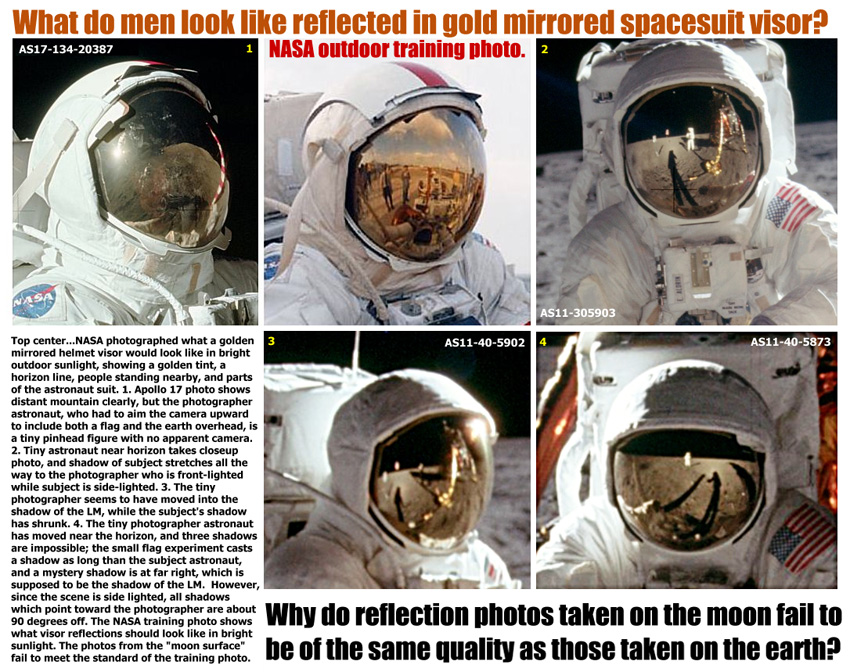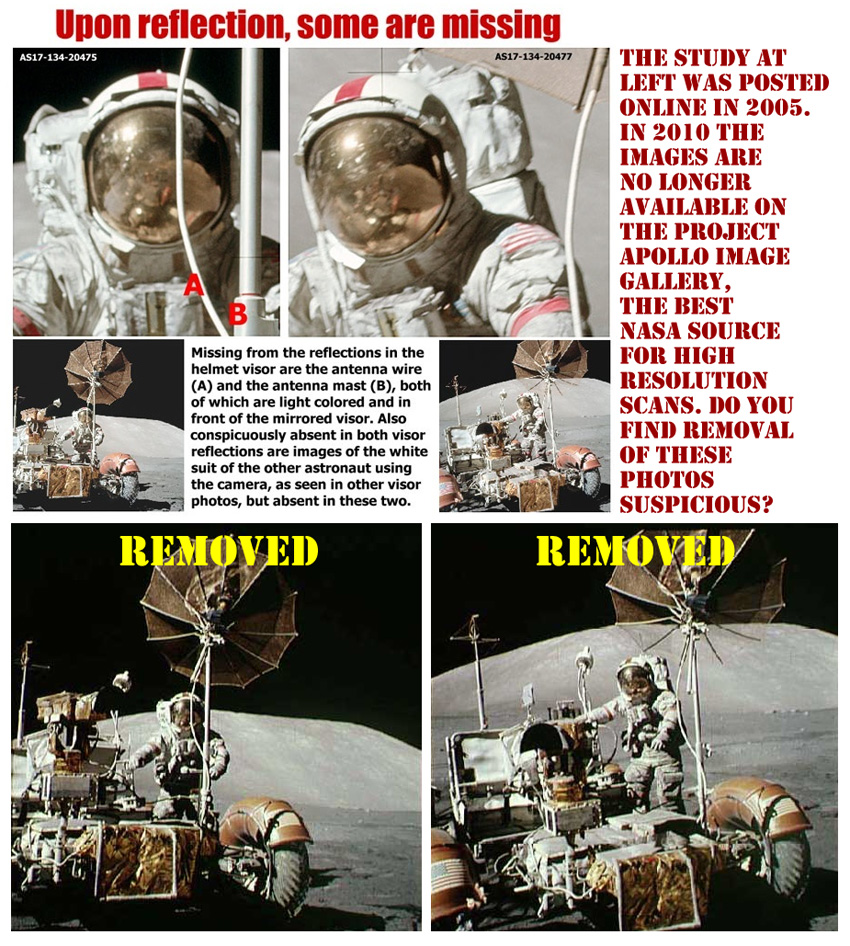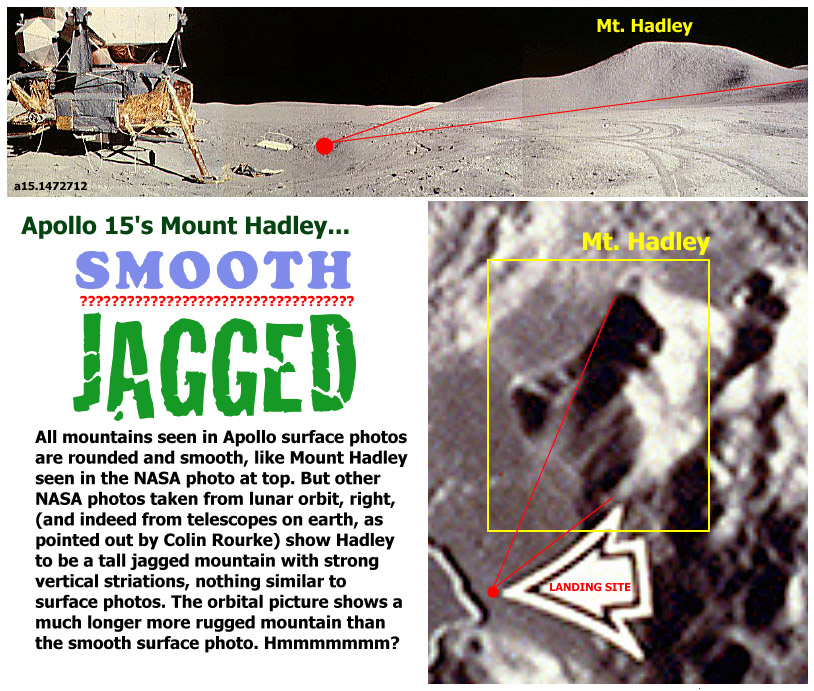Jack White's Apollo Studies

Apollo visor reflection anomalies


Apollo earth composite revealed 1
Apollo earth composite revealed 2
An observation on the above study by Peter Wakefield Sault: The angular size of the Moon viewed from the Earth is about half a degree. Since the diameter of the Earth is about four times that of the Moon, the Earth viewed from the Moon should appear to be about four times as wide as the Moon viewed from the Earth, or 2 degrees. As it is, the pasted Earth appears to be about half the diameter of the Moon from Earth.

Creative lighting and exposure control
Editor's Comment: Lest anyone misunderstand this study, Jack White has taken a NASA training photo and demonstrates how easy it is to adjust exposure to black in the background of a photograph taken at a NASA facility. This is not to suggest that Apollo black skies were created this way. Rather it shows how easy it is to tamper with photos by simple exposure changes.

Editor's Note: Images AS17-134-20475 and AS17-134-20477 have since been restored to the gallery.

Editor's Note: Images AS17-134-20475 and AS17-134-20477 have since been restored to the gallery.


Two versions of same Apollo image


Editor's Note: This is not actually a fly, but a protective cover/patch for the urine disposal vent. Urine collection was internal, but urine disposal was external from the urine collection bag in the suit.

 Landing Point Designator from Inside the LM |
Editor's Note: Any effective falsification requires the embodiment of an element of truth or reality. In this instance the Commander’s window guide acts as the ‘mast’ for the ‘flag’.
In the case of an actual lunar surface scenario, it would be very difficult to be able to register these markings. Recall that this was reversal film with very limited exposure latitude. The interior of the LM would need to be illuminated and the landing point designator backlit. The aluminium Mylar shield inside the LM might act as a reflector, but only if sufficient incoming light was available. This Mylar shield just happened to be in the right position to form the 'flag'.
This side of the LM – including the window – was in complete shadow.
No other photographs taken in this series deliver the same result. On the contrary, photographs AS11-40-5863 and AS11-40-5867 have a blue ‘sky’ colouring the same window.
This descending the ladder series of images has been the subject of close study by researchers over many years including Dr David Groves, All of which, including the latest investigation by two Russian Cinematographers demonstrate conclusively that this photograph and by implication, the other photographs in the series, were all lit by artificial lighting.
And while it explains how the items inside the LM were rendered visible from the outside – no photographic lights whatsoever were taken to the Moon in 1969.Please see also: MythBusters Exposed and Extra Lighting Used on the Moon in Examples of Anomalies and Inconsistencies in Apollo Photography.
Orbital and lunar surface image mis-match
Astronaut with no PLSS on Moon?
Editor's Note: As we have stated elsewhere in the case of the famous Apollo 11 photograph of Aldrin – the reflection in the visor is not that of the photographer of the image.
